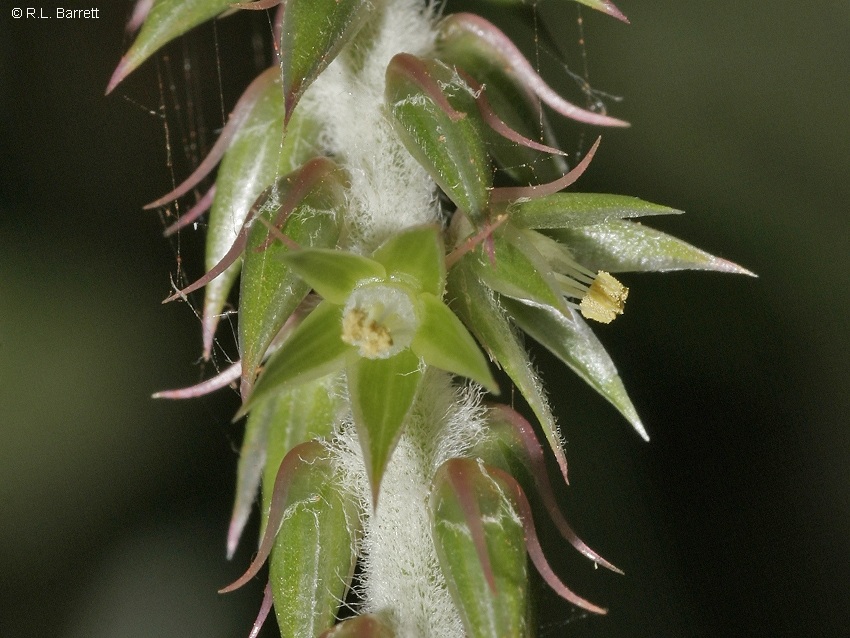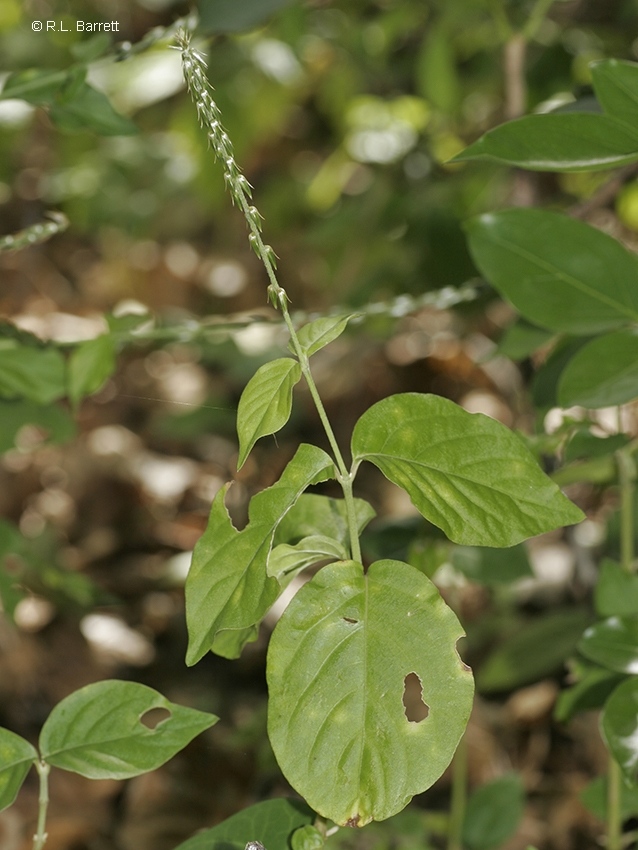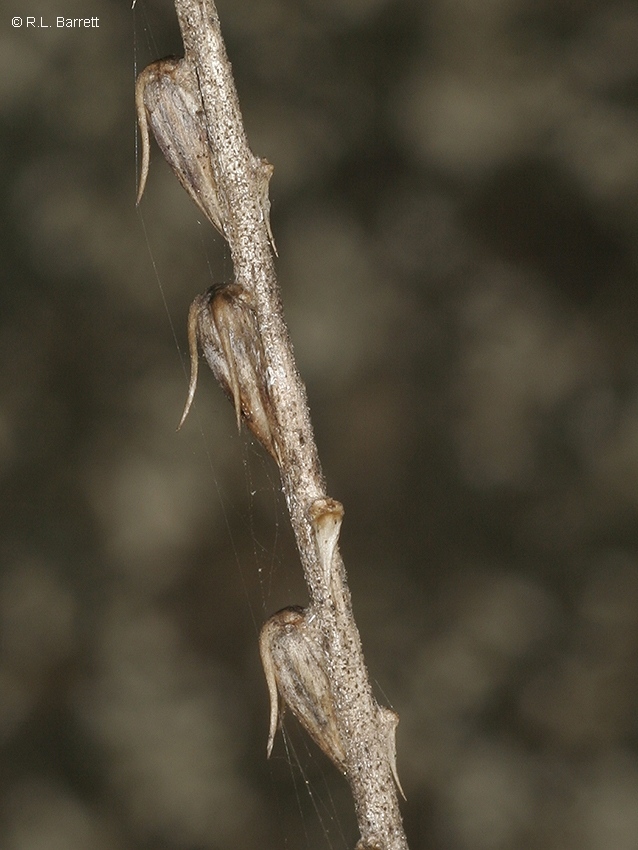Australian Tropical Rainforest Plants - Online edition
Achyranthes aspera L.










Linnaeus, C. von (1753) Species Plantarum 2: 204. Type: Habitat in Sicilia, Zeylona, Jamaica.
Chaff Flower; Prickly Chaff Flower
Usually flowers and fruits as a small shrub up to 1.5 m tall.
Leaf blades about 1.5-13.5 x 0.7-6 cm, petioles about 0.5-2.5 cm long. Hairs present on both the upper and lower surfaces of the leaf blade.
Spikes about 10-75 cm long, with spiny bracteoles appressed against the 3-5 mm long perianth segments. Flowers +/- erect in bud. Staminal filaments united in the lower half to form a short hyaline tube which is fimbriate at the apex and completely surrounds the ovary. Ovule one, placenta linear, +/- encircling the ovule and attached to the base of the ovary.
Fruits reflexed at maturity and adhering to clothing. Perianth segments persistent, hard and pungent pointed, about 6.5 mm long enclosing the fruit. Stigma persistent at the apex. Testa thin and papery. Embryo and cotyledons coiled within the endosperm. Cotyledons U-shaped. Endosperm granular-crystalline.
Cotyledons about 16-30 x 5-7 mm. Stem above the cotyledons densely clothed in pale hairs. Both the upper and lower surfaces of the first pair of leaves clothed in pale hairs. At the tenth leaf stage: stem pubescent, longitudinally grooved. Both the upper and lower leaf surfaces clothed in white prostrate hairs. Seed germination time 14 to 53 days.
Occurs in WA, NT, CYP, NEQ, CEQ and southwards to coastal central New South Wales. Altitudinal range in northern Australia from near sea level to about 200 m ? Grows in monsoon forest, vine thickets and as a weed on waste ground around towns. Also occurs in New Guinea, Malesia and Asia. This species behaves like an introduced weed but appears to have been present in Australia before white settlement as it was collected by Robert Brown at Broadsound and on the Islands of the Gulf of Carpentaria in 1802.
In India, and to a lesser extent in parts of Malaysia and Indonesia, Achyranthes has had a reputation for medicinal use in a wide variety of illnesses such as dropsy, ophthalmia, abdominal tumours, hydrophobia, rheumatism, convulsions, dysentery and coughs. Authorities have suggested that this wide range of usage indicates that the treatment is in the realm of magic rather than of medicine; certainly nothing definite is known of any therapeutic effect. The suggestion of magical powers is supported by use of the flowering spike as a charm against scorpions. Cribb (1981).





